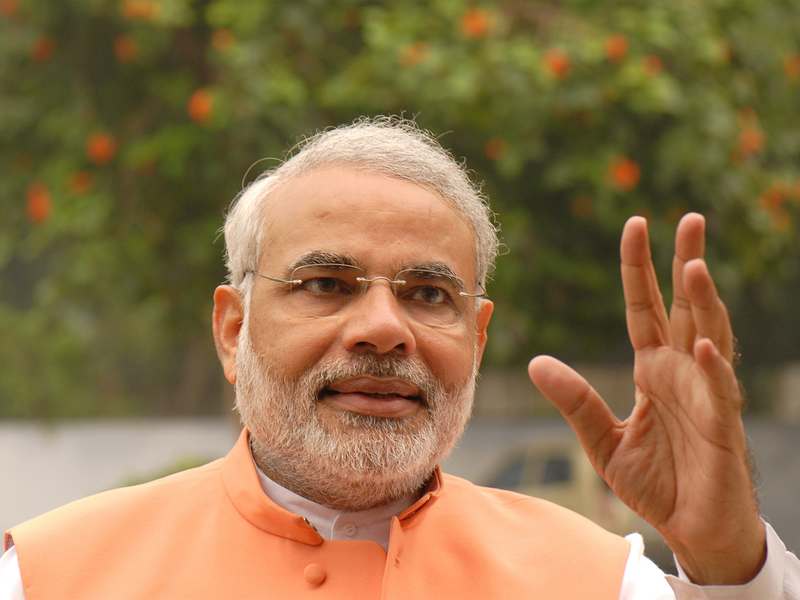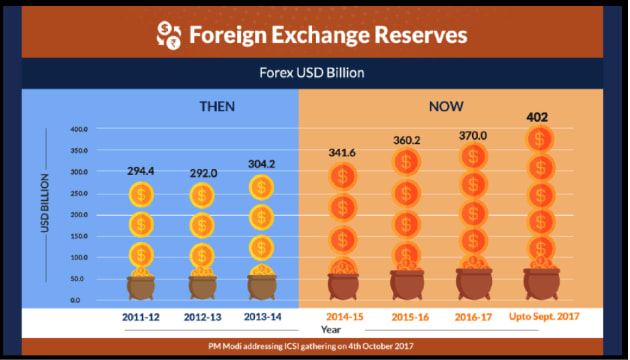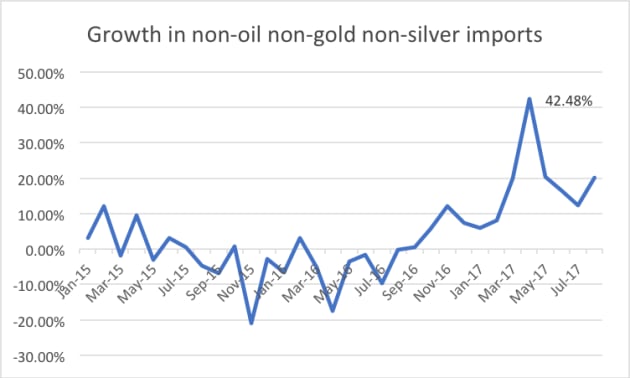छोड़ो कल की बातें, कल की बात पुरानी
नए दौर में लिखेंगे, मिल कर नई कहानी
हम हिंदुस्तानी, हम हिंदुस्तानी
— Prem Dhawan, Usha Khanna, Mukesh and Ram Mukherjee in Hum Hindustani.
The Indian economy contracted by 7.5% during July to September 2020, in comparison with the same period in 2019. When compared with a contraction of 23.9% during April to June 2020, a contraction of 7.5% looks significantly better.
Hence, there has been a lot of song and dance from the establishment and its supporters, on how quickly the Indian economy is recovering, especially when most economists expected the economy to contract by 10% during July to September and it contracted by only 7.5%. Terms like a V-shaped recovery have been bandied around a lot, over the last few weeks.
Nonetheless, India continues to remain in the bottom quartile, when it comes to economic growth/contraction of countries between July to September this year. Greece with an economic contraction of 11.7% is right at the bottom.
In fact, the song and dance of the establishment is likely to continue in the months to come and will reach its peak sometime in the second half of the next year, after the gross domestic product (GDP) figure for the period April to June 2021, is published. GDP is a measure of the economic size of a country.
It is worth remembering here that the GDP during the period April to June 2020 contracted by nearly a fourth. The GDP during the period was Rs 26.90 lakh crore. In comparison, the GDP during April to June 2019 was at Rs 35.35 lakh crore.
So, the GDP during April to June 2021, will grow at a pace which has never been seen before. If it comes in at Rs 30 lakh crore, the growth will be around 11.5%. Given that, the GDP during the period July to September 2020 was already at Rs 33.14 lakh crore, the GDP during April to June 2021, is likely to be higher than that.
At a GDP of Rs 35 lakh crore, the economic growth during April to June 2021 will come in at a whopping 30.1%. Nevertheless, this is just an impact of what economists like to call the low-base effect.
A central government which can use a contraction of 7.5% to market itself, imagine the possibilities of what it can do if the economic growth rate crosses 30% in the first quarter of the next financial year.
While, some song and dance can do no harm to the economy, the real story needs to be understood and told as well. The real GDP in April to June 2021 will be more or less where it was during April to June 2019. In that sense, we will be where we were two years back.
Hence, the economic slowdown which started in mid 2018, along with the contraction that has happened post the spread of the corona epidemic, has pushed the Indian economy back by at least two years. Obviously, this can’t be good news.
Other than talking, the central government hasn’t done much to get the Indian economy going. Between April and October 2020, the government spent a total of Rs 16.61 lakh crore. In comparison, it had spent Rs 16.55 lakh crore during the same period in 2019. The difference being, this year we are in the midst of an economic contraction.
In a scenario where the corporates as well as individuals are going slow on spending money, government spending becomes of utmost importance. Between March 27 and November 20, the non-food credit of banks has gone up just Rs 26,496 crore.
Banks give loans to the Food Corporation of India and other state procurement agencies to buy rice and wheat, directly from the farmers. Once these loans are subtracted from the overall lending of banks what remains is non-food credit.
In comparison, the deposits of banks have gone up by Rs 8.03 lakh crore during the same period. This means just 3.3% of the fresh deposits that banks have got post March have been lent out.
What does this tell us? It tells us that both corporates and individuals are largely sitting tight and saving money. This is an indication of the lack of confidence in the near economic future. While the corporate executives might keep going gaga in the media about an economic revival, these numbers tell us a different story.
What hasn’t helped is the fact corporates have reported bumper profits by driving down their raw material costs, input costs and employee costs. This basically means that along with employees, the suppliers of corporates have also seen an income contraction. This can’t be good news for the overall economy.
The government’s inability to spend, comes from the lack of tax revenues, something that is bound to improve in 2021-22. Other than that, the government hasn’t gotten around to selling its stakes in public sector enterprises. Of the targeted Rs 2.1 lakh crore just 3% has been achieved. This is bizarre given that the stock market is at an all-time high-level.
Hopefully, the government will make up on this in the next financial year. Also, it can look at selling some of the land that it owns in prime localities in Indian cities.
All this can be used to put more money in the hands of consumers through an income tax cut and a goods and services tax cut, encouraging them to spend.
People who pay income tax may form a small part of the population but they are the ones who actually have some purchasing power. And once they start spending more, the chances of it boiling down the hierarchy are higher. Do remember, at the end of the day, one man’s spending is another man’s income.
A slightly different version of this piece appeared in the Deccan Herald on December 20, 2020.











